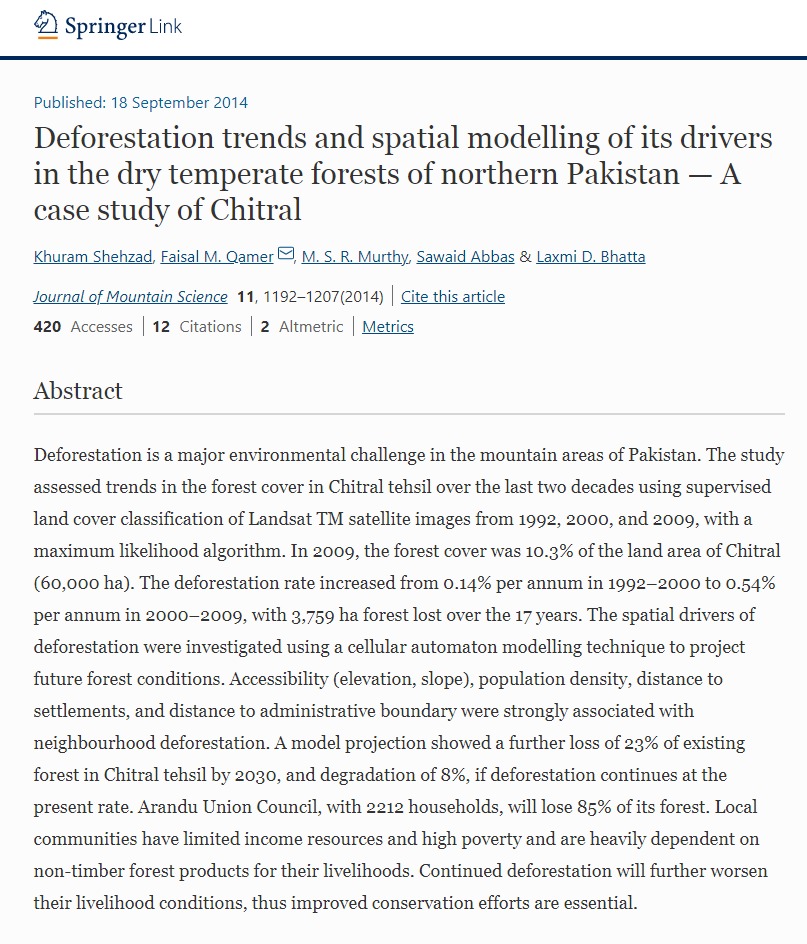
Deforestation is a major environmental challenge in the mountain areas of Pakistan. The study assessed trends in the forest cover in Chitral tehsil over the last two decades using supervised land cover classification of Landsat TM satellite images from 1992, 2000, and 2009, with a maximum likelihood algorithm. In 2009, the forest cover was 10.3% of the land area of Chitral (60,000 ha). The deforestation rate increased from 0.14% per annum in 1992–2000 to 0.54% per annum in 2000–2009, with 3,759 ha forest lost over the 17 years. The spatial drivers of deforestation were investigated using a cellular automaton modelling technique to project future forest conditions. Accessibility (elevation, slope), population density, distance to settlements, and distance to administrative boundary were strongly associated with neighbourhood deforestation. A model projection showed a further loss of 23% of existing forest in Chitral tehsil by 2030, and degradation of 8%, if deforestation continues at the present rate. Arandu Union Council, with 2212 households, will lose 85% of its forest. Local communities have limited income resources and high poverty and are heavily dependent on non-timber forest products for their livelihoods. Continued deforestation will further worsen their livelihood conditions, thus improved conservation efforts are essential. Look Inside 5 Shares Other actions Export citation Register for Journal Updates About This Journal Reprints and Permissions Add to Papers Share Share this content on Facebook Share this content on Twitter Share this content on LinkedIn Related Content